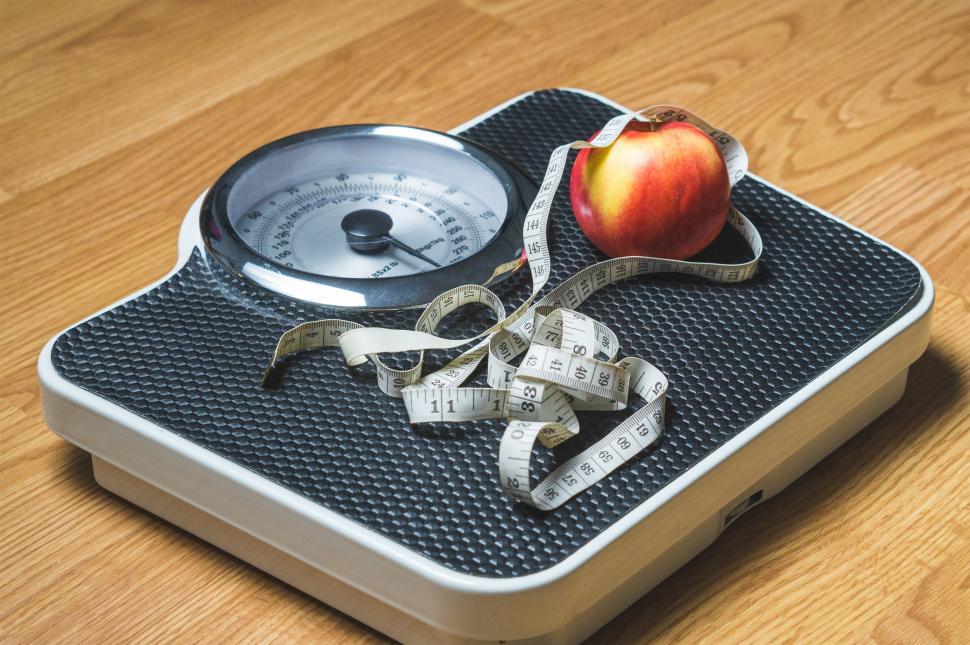By Nancy Clark MS RD CSSD — Many athletes fantasize about losing weight (“Wouldn’t it be nice to lose a few pounds…”). But some athletes have to lose weight in order to meet a specific division for their sport. Athletes such as boxers might have to make weight for a day only once or twice a year, but others such as wrestlers are wisest to keep their weight low for a season. And then there are figure skaters, dancers, and gymnasts who live in long-term “food jail” to maintain a sleek physique for months on end because they get judged on aesthetics. This article will not focus on the problems with long-term under-eating, but rather offer help for athletes who have to/want to lose weight for the short-term.

Weight classes exist to supposedly even the playing field so, for example, a wrestler or a rower competes against someone who is about the same physical size. A problem with weight-class sports is too many athletes target a minimal weight that is unlikely their best performance weight and focus on a number on a scale instead of ability to compete well. They often resort to last-minute restrictive dieting and dehydrating to make weight. Inadequate recovery between weigh-ins and the event can contribute to early bonking, poor performance, and disappointments. One champion collegiate wrestler shared his winning advice, “I ate well, competed at my natural weight, and clobbered my starving opponents. Easy!” The same goes for athletes in running sports, who believe lighter equates to faster. Not always the case. There’s a lot to be said for running well-fueled at your natural weight.
So what are weight-class athletes supposed to do?
Obviously, they are not supposed to wait until the last few days before an event to lose weight by abstaining from food and water, over-exercising, and abusing their bodies. The better path is to start chipping away at weight loss weeks in advance. If you have to lose 10 pounds, give yourself at least 5 to 10 weeks to do so, if not more.
Ideally, athletes should first have their body fat accurately measured to determine if they even have fat to lose. Females should not drop below 12% body fat, males no less than 5%. Some athletes will need to lose muscle to be able to reach their weight goal.
What’s the best way to lose weight? Push yourself away from the dinner table before you eat your fill! Plain and simple, you have to eat less than your body requires. Easier said than done. Hence, these tips might be helpful.
- Knock off only 300-500 calories/day from your typical daily intake. Do NOT chop your food intake in half or eat as little as possible! As an athlete, you need fuel to train.
- Fuel by day; diet by night. Plan to lose weight when you are sleeping—not when you are trying to train hard.
- Surround your workout with food, so that you fuel-up and refuel.
- Do NOT cut out all carbohydrates. Athletes need grains, veggies, and fruits to optimize their muscle glycogen stores. A very low-carb diet results in depleted glycogen, “dead legs,” and inability to train hard.
- Enjoy carb-protein combinations: carbs to fuel muscles; protein to build and repair muscles. Protein is also satiating and can help curb hunger.
- When it’s crunch-time, to lose the last few pounds, some athletes target about 1.5 g carb, 1 g protein, and 0.5 g fat per pound of body weight (3 g carb, 2 g pro, 1 g fat/kg). This means a 150-lb (68 kg) athlete would target about 200 g carb, 135 g pro, and 70 g fat (~1,950-2,000 calories/day).
- Athletes who have to lose muscle mass to hit their weight target should cut back on their protein intake.
- Divide the calories into 4 food buckets and eat a meal at least every 4 hours. (The clock starts ticking when you get up in the morning). An athlete who trains from 6:30 to 7:30 a.m. could divide breakfast into 100-200 calories pre-workout at 6:00ish, then 400 calories post-workout at 8:00; eat early lunch (500 cal.) at 11:00ish; later lunch (400-500 cal.) at 3:00ish, and dinner at 6:00-7:00ish (500 cal.). The rest of the night, chew gum, drink herbal tea, go to bed early? (If you are ravenous, please eat a bit more.)
- If you don’t have fat to lose, plan in last-minute water-weight loss of 2% to 3% body weight. For a 150-lb athlete, that’s 3 to 4.5 pounds. Ways to reduce water-weight include depleting muscle glycogen with a low-carb diet (3 grams of water are stored with one gram of muscle glycogen), restricting fiber (to reduce gut contents), sweating, and restricting fluids.
Rapid refueling pre-event
After weighing in, some weight-class athletes have only 1 to 2 hours to refuel and rehydrate before they compete; others have 12+ hours if they weigh-in the night before. To rapidly refuel, they should consume carbs they know they can tolerate well—and be sensible so they don’t vomit during the event. Enjoy (well-tolerated) salty foods like soup, pretzels, and crackers.
- A large bolus of fluid gets absorbed faster than smaller amounts, so dehydrated athletes want to drink 20 to 30 ounces of fluid followed by repeated sips. Salty broth and lowfat chocolate milk retain water in the body better than sports drinks and plain water. Co-ingestion of some protein can help with glycogen restoration (Turkey sandwich? Chocolate milk?)
Post-event weight regain
While the standard advice for weight-class athletes to just lose the weight and keep it off makes sense intellectually, it is the opposite of what the body wants to do physiologically. After having been underfed, hungry athletes experience a very strong drive to eat, if not over-eat, and regain all the lost weight. This happens with most dieters, athletic or not.
The urge to devour food after having made weight is physiological, and not simply due to lack of will-power. Here’s the analogy: If you hold your breath for too long, you will uncontrollably gasp for air. If you rigorously restrict calories for too long, you will uncontrollably grab for food and easily binge-eat. No wonder eating disorders blossom in weight-focused sports!
The bottom line
Any way you look at it, losing weight when you really are not over-fat in the first place is not much fun. Yes, it creates a bond with other athletes doing the same thing—misery loves company—and is embedded into the culture of weight-focused sports. Ideally, it’s time to change that culture to focus more on health (both short and long term) and injury reduction. How about establishing height classes instead of weight classes? Or at least offer better access to sports dietitians to help with the weight-reduction process?
To find your local RD CSSD (Registered Dietitian who is a board Certified Specialist in Sports Dietetics), please use the referral networks at www.EatRight.org and www.HealthProfs.com
References:
- Langan-Evans C. at al. 2021. Nutritional considerations for female athletes in weight category sports. European Journal of Sports Science
- Burke, L, et al. 2021. ACSM Consensus Statement on Weight Loss in Weight-Category Sports. Current Sports Medicine Reports








